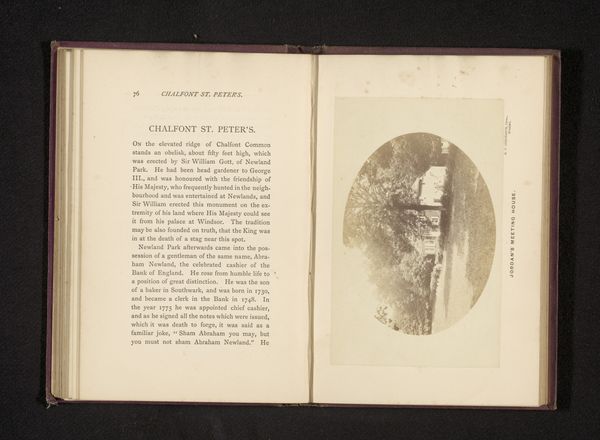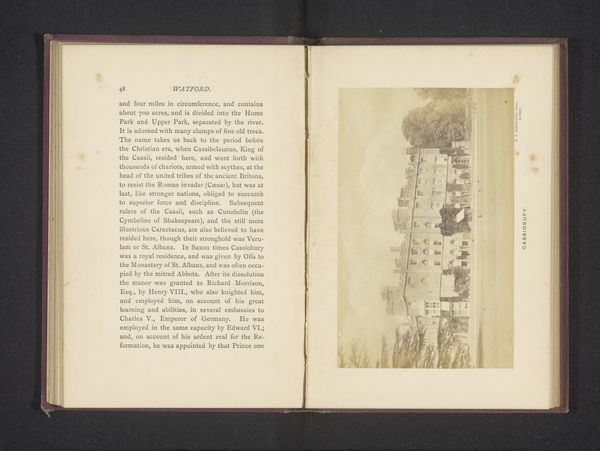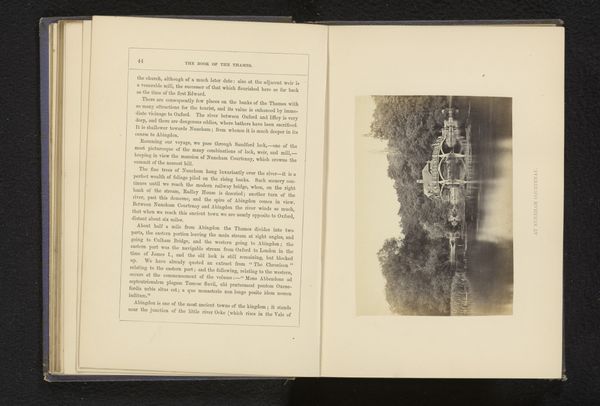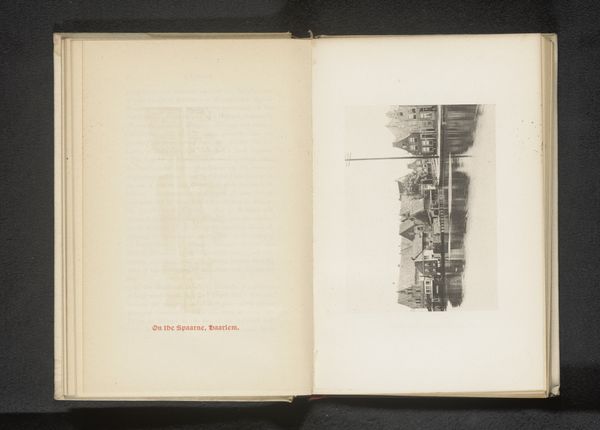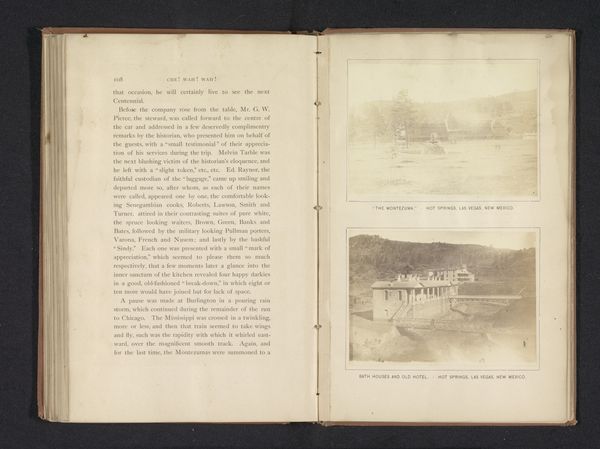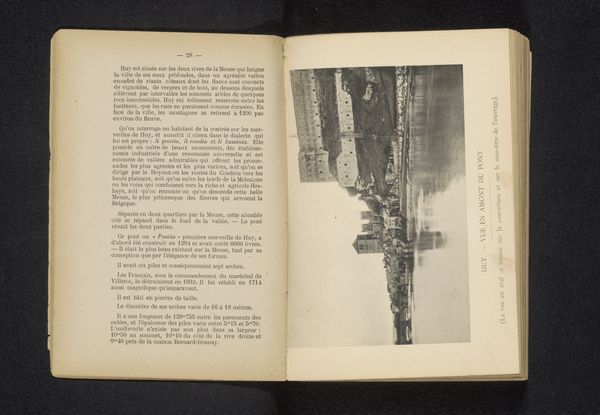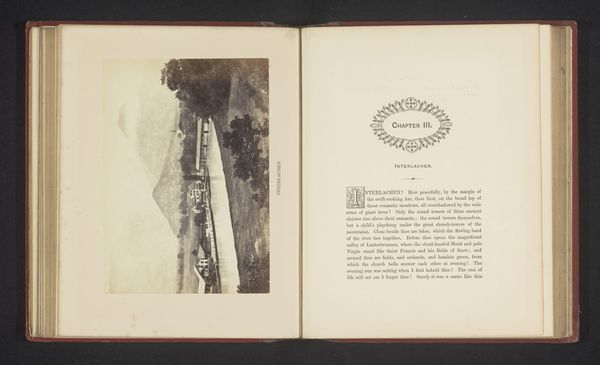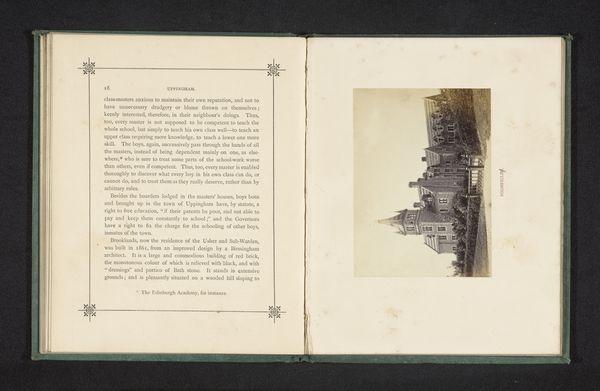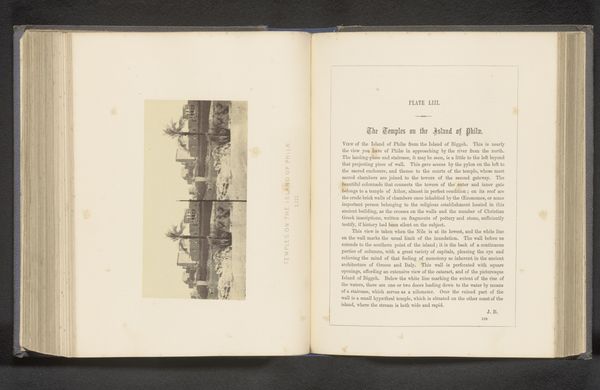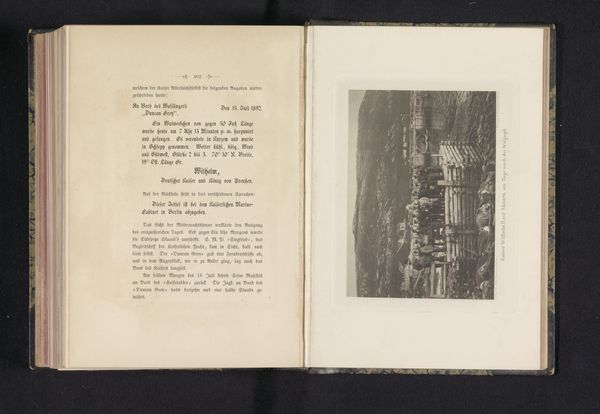
print, photography, albumen-print
# print
#
landscape
#
photography
#
albumen-print
Dimensions: width 88 mm, thickness 139 mm
Copyright: Rijks Museum: Open Domain
Editor: So, here we have a page from an album containing an albumen print titled "Gezicht op the Grove te Watford," dating from between 1865 and 1870, attributed to H.V. Lemenager. It's a landscape, and seeing it within the book gives it such a sense of time and place. How do you interpret this work, thinking about its place in history? Curator: It's interesting how the photograph is presented within this bound volume, almost domesticated. Looking at "The Grove" through an activist lens, I'm drawn to the relationship between the landed gentry and the labor that sustains them. The text celebrates the Earl of Clarendon, but what about the people who maintained that estate, who enabled its very existence? What stories are intentionally absent from this narrative? Editor: That’s a powerful point. We get a list of Earls, but no mention of those who worked the land. Does the photographic medium itself play into this at all? Curator: Absolutely. Early photography, especially when tied to portraiture and landscape, often served the interests of the wealthy and powerful. It was a tool for solidifying status, for creating a visual record that reinforced existing social hierarchies. The very act of meticulously capturing "The Grove" becomes a kind of symbolic ownership. The print itself can be understood as an artifact that underscores power dynamics. In whose hands would this album reside, and what narratives were thus perpetuated? Editor: So, by appreciating the landscape, are we in some ways complicit? Curator: Not necessarily. Recognizing the photograph’s inherent biases empowers us to question the accepted narratives. We can consider how the same landscape might be represented by those whose voices are usually marginalized or even actively silenced, thereby generating a more complete account of reality. What kind of photographs would laborers or tenant farmers have produced or, in many cases, not been permitted to create? Editor: This has totally changed how I look at this print! Thanks for shedding some light on what might be intentionally overlooked. Curator: Likewise, it's in asking these difficult questions, in troubling these traditional narratives, that art history becomes relevant, engaged, and transformative.
Comments
No comments
Be the first to comment and join the conversation on the ultimate creative platform.
